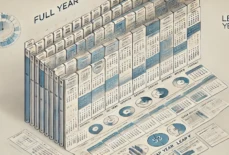Java has been a stalwart in web development for many years, and as we move into 2023, its popularity remains steadfast. Java offers a plethora of frameworks that cater to various web development needs, making it a versatile choice for building robust, scalable, and feature-rich web applications. In this article, brought to you by our leading Java development company, we will explore the 10 best Java frameworks for web development in 2023, highlighting their key features, advantages, and use cases.
Spring Framework
The Spring Framework stands as a cornerstone of Java web development. Renowned for its extensive features and modular architecture, Spring provides developers with the tools they need for building enterprise-level applications. With dependency injection, aspect-oriented programming, and robust security mechanisms, Spring enables developers to create scalable and maintainable applications. Additionally, Spring Boot, a sub-project of Spring, streamlines application setup and deployment, offering unparalleled productivity.
Use Cases: Spring is a top choice for building large-scale web applications, RESTful APIs, and microservices due to its versatility and seamless integration capabilities.
JavaServer Faces (JSF)
JavaServer Faces (JSF) is a component-based web framework included in the Java Enterprise Edition (EE) standard. It simplifies web application development by abstracting UI components, event handling, and data binding. JSF’s reusability and extensive library of components make it suitable for complex enterprise projects with intricate user interfaces.
Use Cases: JSF is ideal for building data-intensive applications, customer portals, and enterprise-level systems with sophisticated UI requirements.
Play Framework
The Play Framework takes a different approach, emphasizing developer productivity and rapid development. Following the “convention over configuration” principle, Play minimizes boilerplate code, allowing developers to focus on building feature-rich applications. Its reactive architecture and support for asynchronous programming enable building highly responsive and scalable applications.
Use Cases: Play Framework excels in building real-time web applications, streaming services, and systems requiring high concurrency and responsiveness.
Vaadin
Vaadin is a unique Java web framework that enables developers to build modern web applications entirely in Java, eliminating the need for HTML, CSS, or JavaScript. With a rich set of pre-built UI components, Vaadin simplifies the creation of complex user interfaces. Its server-side rendering approach ensures seamless user experiences and straightforward maintenance.
Use Cases: Vaadin is an excellent option for projects where developers have strong Java skills but limited front-end expertise, such as in-house enterprise applications and administrative dashboards.
Spark Framework
Spark is a lightweight and straightforward micro-framework that offers essential features for web development. Its simplicity, ease of setup, and minimal configuration make it ideal for small to medium-sized projects. Although simple, Spark supports routing, templates, and static file serving, allowing developers to build functional applications with ease.
Use Cases: Spark is well-suited for building simple web applications, prototypes, and RESTful APIs where a more extensive framework might be overkill.
Struts
Struts is a well-established and reliable Java web framework that adheres to the Model-View-Controller (MVC) architectural pattern. With a vast community and ecosystem, Struts continues to be a preferred choice for many developers. Its division of code into distinct layers enhances maintainability and scalability.
Use Cases: Struts is an excellent fit for modernizing legacy applications or projects that prioritize stability and gradual enhancements over adopting newer frameworks.
Dropwizard
Dropwizard is a high-performance and opinionated web framework tailored for building RESTful APIs and microservices. Combining libraries like Jetty, Jersey, and Jackson, Dropwizard provides a cohesive development experience. By promoting sensible defaults, Dropwizard streamlines development and enables rapid prototyping of production-ready applications.
Use Cases: Dropwizard is the framework of choice for developing RESTful APIs, web services, and microservices, where performance and ease of development are paramount.
Micronaut
Micronaut is a relatively new addition to the Java web development landscape, gaining popularity for its fast startup times and low memory footprint. With ahead-of-time (AOT) compilation and support for reactive programming, Micronaut offers excellent performance and scalability for modern web applications.
Use Cases: Micronaut is an excellent option for building cloud-native and serverless applications, as well as microservices requiring rapid scaling.
Ninja Framework
Ninja is a full-stack web framework designed to simplify web application development. It aims to reduce boilerplate code, increase productivity, and provide a clean and concise structure for building applications. With built-in support for dependency injection and powerful routing capabilities, Ninja is a developer-friendly choice.
Use Cases: Ninja Framework is well-suited for projects that demand a clean and efficient development process, making it a strong candidate for startups and small teams.
Grails Framework
Grails, built on top of the Groovy language, is a high-productivity web framework known for its simplicity and ease of use. It leverages existing Java libraries while offering a modern development experience. With its convention-over-configuration philosophy and support for the Groovy ecosystem, Grails speeds up development time significantly.
Use Cases: Grails is an excellent choice for developers who appreciate the simplicity of Groovy and seek fast application development without sacrificing performance.
Conclusion
As we delve into 2023, Java web development, powered by our expert Java software development company, continues to thrive with a plethora of frameworks catering to diverse needs. Whether you prioritize scalability, developer productivity, or simplicity, there’s a Java framework that aligns perfectly with your project requirements.
Spring Framework remains the undisputed leader, empowering developers to build enterprise-level applications with ease. For complex user interfaces, JavaServer Faces (JSF) shines with its component-based approach. Those looking for productivity and rapid development should consider the Play Framework, while Vaadin offers a unique way to build modern UIs with minimal front-end knowledge.
For simpler projects, Spark Framework and Struts provide solid options, and Dropwizard and Micronaut cater to developers seeking high-performance, scalable APIs and microservices. Ninja Framework’s simplicity and efficiency make it an attractive choice for startups and small teams, while Grails, with its Groovy foundation, offers a high-productivity alternative.
In conclusion, the best Java framework for web development in 2023 will depend on your project’s specific needs, your development team’s expertise, and your desired level of scalability and performance. With Java’s versatility and these top-notch frameworks at your disposal, you can confidently embark on building robust, modern web applications to meet the demands of the digital world.




































































